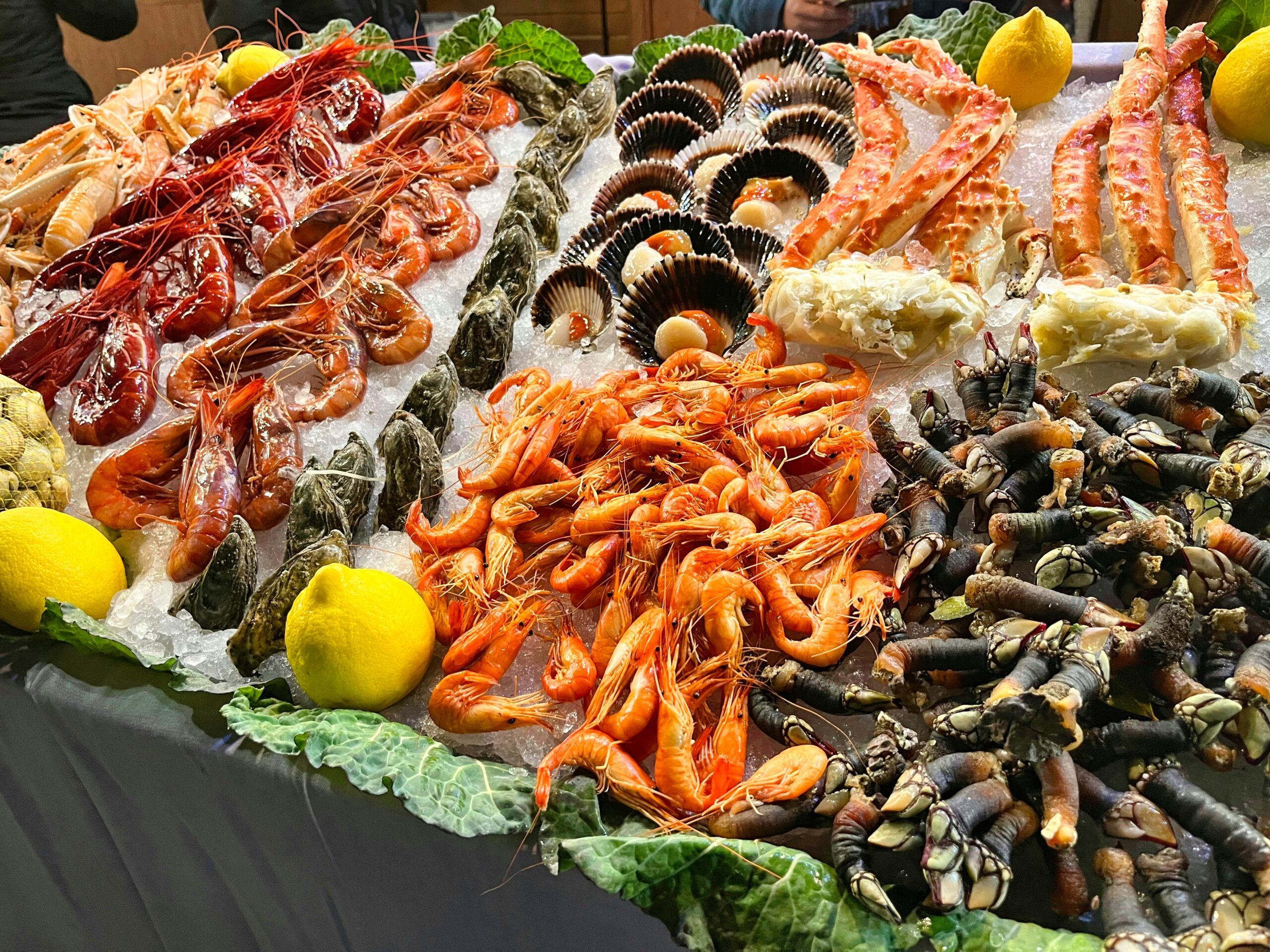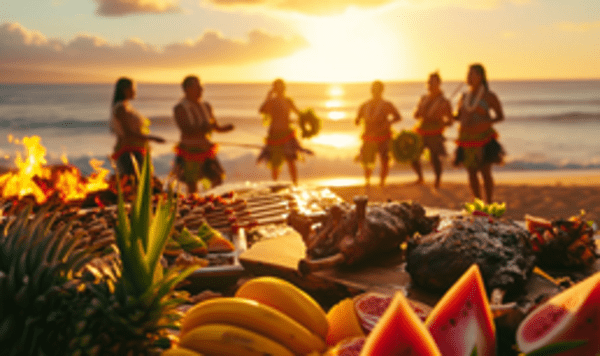Coastal cuisine is a delightful journey through fresh flavors, vibrant colors, and the rich traditions of seaside communities. From succulent seafood to innovative beachside dining experiences, the culinary offerings by the shore are as diverse as the landscapes themselves. Whether you’re lounging on the sandy beaches of California, exploring the quaint fishing villages of New England, or indulging in the tropical flavors of the Caribbean, there’s no shortage of delicious bites to savor. This guide will take you through some of the best coastal culinary delights, highlighting must-try dishes, iconic dining spots, and unique culinary experiences that will make your seaside getaway unforgettable.

1. The Freshest Seafood: A Taste of the Ocean
When it comes to coastal cuisine, nothing beats the taste of freshly caught seafood. Depending on the region, diners can enjoy a variety of specialties. In the Pacific Northwest, for instance, Dungeness crab is a must-try, often served with melted butter and lemon. In the Gulf Coast, shrimp and grits is a beloved dish that combines plump shrimp sautéed with spices, served over creamy grits. Expect to pay around $25 for a hearty seafood platter at a local restaurant.
For those who prefer a more hands-on experience, consider visiting a local fish market. Many coastal towns offer the chance to buy fresh seafood directly from fishermen. This not only supports local businesses but also allows you to prepare a meal with the freshest ingredients. Prices at fish markets can vary, but expect to pay around $15-$30 per pound for premium catches.
2. Iconic Beachside Dining Spots
Dining by the beach is an experience that elevates the meal itself. Picture yourself enjoying a sunset while savoring a plate of grilled fish tacos at a beachfront restaurant. Some iconic beachside dining spots include:
“There’s something magical about dining with your feet in the sand and the scent of the sea in the air.”
— Unknown
- The Lobster Shack in Cape Elizabeth, Maine – Famous for its lobster rolls, priced around $20.
- Fish Market in San Diego, California – Known for its fish tacos and ceviche, with prices ranging from $10 to $25.
- Conch Shack in Grace Bay, Turks and Caicos – A must-visit for conch fritters, costing about $15.
Reservations are recommended during peak season, especially in popular tourist areas. Expect to pay a bit more for dining with a view, but the experience is often worth the splurge.
3. Unique Culinary Experiences by the Shore
For those looking to immerse themselves in the local culture, participating in a culinary class can be a fantastic option. Many coastal towns offer cooking classes focusing on regional seafood dishes. For example, in Charleston, South Carolina, a Lowcountry cooking class typically costs around $75 per person and includes a hands-on experience preparing dishes like shrimp and grits or she-crab soup.
Another unique experience is a seafood tour, where travelers can explore local fisheries, learn about sustainable fishing practices, and enjoy tastings along the way. These tours often range from $50 to $150, depending on the length and inclusions.
Local Markets: A Feast for the Senses
Visiting local markets is an essential part of experiencing coastal cuisine. Markets often feature a variety of fresh seafood, local produce, artisanal products, and prepared foods. The Pike Place Market in Seattle is a prime example, where visitors can watch fishmongers throw fish and sample local delicacies. Expect to spend around $10-$20 for a meal from one of the many food stalls.
In addition to seafood, markets often showcase local specialties. For instance, in New England, clam chowder is a staple, and many markets offer it in various forms. Sampling different dishes while wandering through a market is a great way to discover new flavors and support local vendors.
Pairing Coastal Cuisine with Local Beverages
No meal is complete without a drink to complement the flavors. Coastal regions often have unique beverages that pair perfectly with seafood. For example, in the Pacific Northwest, craft beers and local wines are popular choices. A pint of local craft beer typically costs around $6-$8, while a glass of regional wine can range from $8 to $15.
In tropical regions, refreshing cocktails made with local fruits are a must-try. A classic mojito or piña colada can cost between $10 and $15 at beach bars. Additionally, many coastal areas offer tastings at local distilleries or breweries, providing a deeper insight into the region’s beverage culture.
Sustainable Seafood: Eating Responsibly
As awareness of sustainability grows, many coastal restaurants are committed to serving responsibly sourced seafood. Look for establishments that display certifications from organizations like the Marine Stewardship Council (MSC) or the Monterey Bay Seafood Watch. These certifications indicate that the seafood is sourced in a way that supports healthy ocean ecosystems.
Dining at these establishments may come at a premium, but the peace of mind knowing that your meal supports sustainable practices is invaluable. Expect to pay about 10-20% more for sustainably sourced seafood, but the quality and taste are often superior.
Exploring Regional Specialties
Every coastal region has its own specialties that reflect the local culture and environment. For instance, in New England, clam bakes are a cherished tradition, where clams, corn, and potatoes are steamed together. Participating in a clam bake can cost around $50 per person, but it’s an experience that brings people together.
In the Southern U.S., the Lowcountry boil is a must-try, featuring shrimp, sausage, corn, and potatoes boiled together and served on a table covered with newspaper. This communal dining experience is not only delicious but also a fun way to enjoy a meal with friends and family.
Frequently Asked Questions
What’s the best time of year to visit coastal areas for culinary experiences?
The best time to visit coastal areas for culinary experiences often depends on the region. In general, late spring to early fall is ideal for most coastal destinations. For instance, summer months (June to August) are perfect for enjoying fresh seafood, as many species are in season. However, visiting during the shoulder seasons (April-May and September-October) can provide a more relaxed atmosphere with fewer crowds and often lower prices.
How much should I budget for coastal dining?
Budgeting for coastal dining can vary widely depending on the location and type of dining experience. On average, expect to spend around $20-$50 per person for a casual meal at a beachside restaurant. Fine dining establishments can range from $50 to $150 per person, especially if wine pairings are included. Additionally, budgeting for local markets and food tours can add another $30-$100 to your total costs.
What should I pack for a coastal culinary trip?
When packing for a coastal culinary trip, consider bringing comfortable clothing suitable for warm weather, as well as a light jacket for cooler evenings. Don’t forget a reusable tote bag for shopping at local markets and a good camera to capture your culinary adventures. If planning to participate in cooking classes, check if any specific items are required.
Are there any safety concerns when dining by the beach?
Dining by the beach is generally safe, but it’s wise to be cautious. Always choose reputable restaurants that follow health and safety regulations. Be mindful of food allergies, especially with seafood. Additionally, if consuming alcohol, ensure to stay hydrated and be aware of your surroundings, particularly in crowded areas.
What transportation options are available for exploring coastal dining spots?
Transportation options vary by location. In popular tourist areas, public transportation, such as buses or trams, can be convenient. Renting a bike or scooter is also a fun way to explore coastal towns. For more remote locations, consider renting a car for greater flexibility. Ride-sharing services are often available in urban areas, making it easy to get to dining spots without worrying about parking.
What are some local customs to be aware of when dining by the beach?
Local customs can vary significantly by region. In many coastal areas, it’s common to dine casually, often with a relaxed dress code. Tipping practices typically follow standard guidelines, with 15-20% being customary. Additionally, some regions may have specific seafood etiquette, such as how to eat shellfish or the proper way to enjoy a clam bake.
Any insider tips for enjoying coastal cuisine?
To make the most of your coastal culinary experience, consider dining during off-peak hours to avoid long waits. Engaging with locals can also lead to discovering hidden gems that may not be on tourist maps. Lastly, don’t hesitate to ask restaurant staff for recommendations on the freshest catch of the day or local specialties.


















